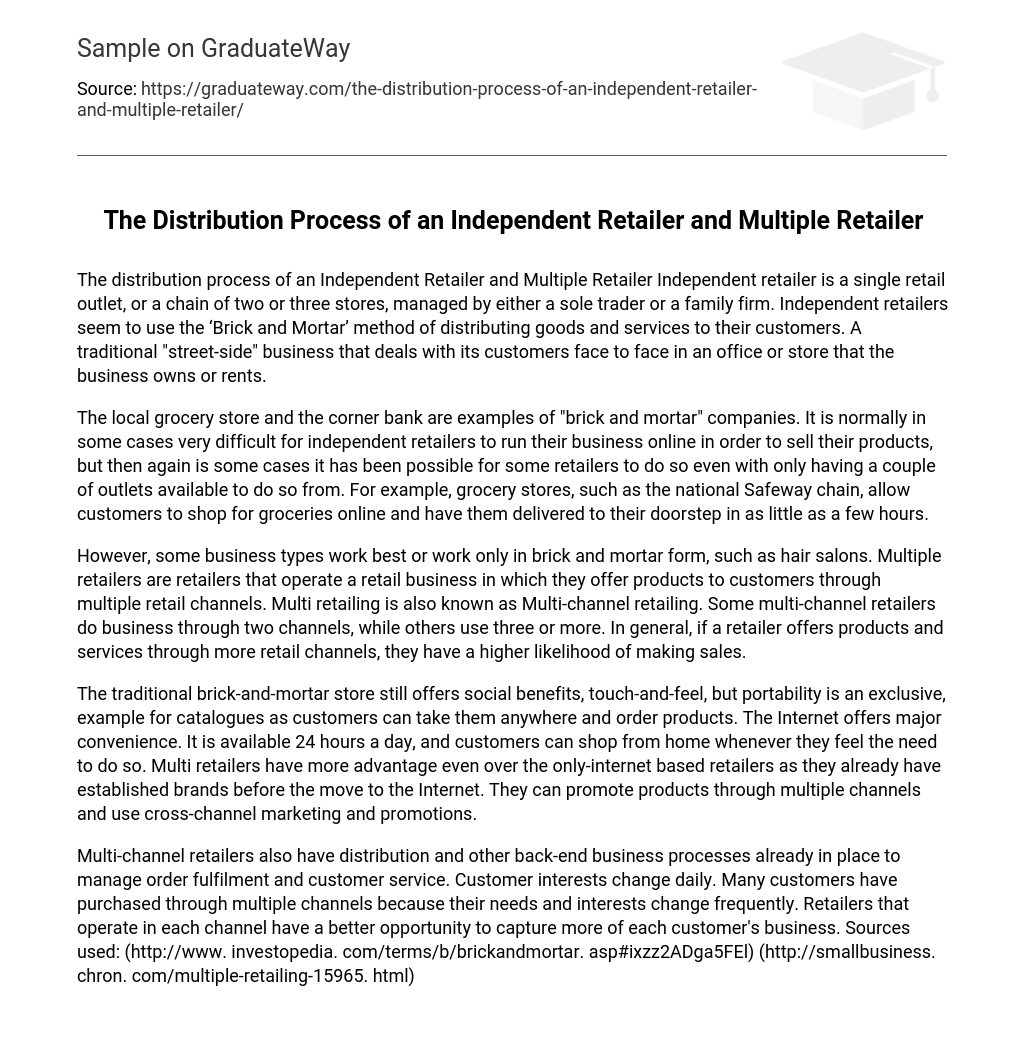The distribution process of an Independent Retailer and Multiple Retailer Independent retailer is a single retail outlet, or a chain of two or three stores, managed by either a sole trader or a family firm. Independent retailers seem to use the ‘Brick and Mortar’ method of distributing goods and services to their customers. A traditional “street-side” business that deals with its customers face to face in an office or store that the business owns or rents.
The local grocery store and the corner bank are examples of “brick and mortar” companies. It is normally in some cases very difficult for independent retailers to run their business online in order to sell their products, but then again is some cases it has been possible for some retailers to do so even with only having a couple of outlets available to do so from. For example, grocery stores, such as the national Safeway chain, allow customers to shop for groceries online and have them delivered to their doorstep in as little as a few hours.
However, some business types work best or work only in brick and mortar form, such as hair salons. Multiple retailers are retailers that operate a retail business in which they offer products to customers through multiple retail channels. Multi retailing is also known as Multi-channel retailing. Some multi-channel retailers do business through two channels, while others use three or more. In general, if a retailer offers products and services through more retail channels, they have a higher likelihood of making sales.
The traditional brick-and-mortar store still offers social benefits, touch-and-feel, but portability is an exclusive, example for catalogues as customers can take them anywhere and order products. The Internet offers major convenience. It is available 24 hours a day, and customers can shop from home whenever they feel the need to do so. Multi retailers have more advantage even over the only-internet based retailers as they already have established brands before the move to the Internet. They can promote products through multiple channels and use cross-channel marketing and promotions.
Multi-channel retailers also have distribution and other back-end business processes already in place to manage order fulfilment and customer service. Customer interests change daily. Many customers have purchased through multiple channels because their needs and interests change frequently. Retailers that operate in each channel have a better opportunity to capture more of each customer’s business. Sources used: (http://www. investopedia. com/terms/b/brickandmortar. asp#ixzz2ADga5FEl) (http://smallbusiness. chron. com/multiple-retailing-15965. html)





